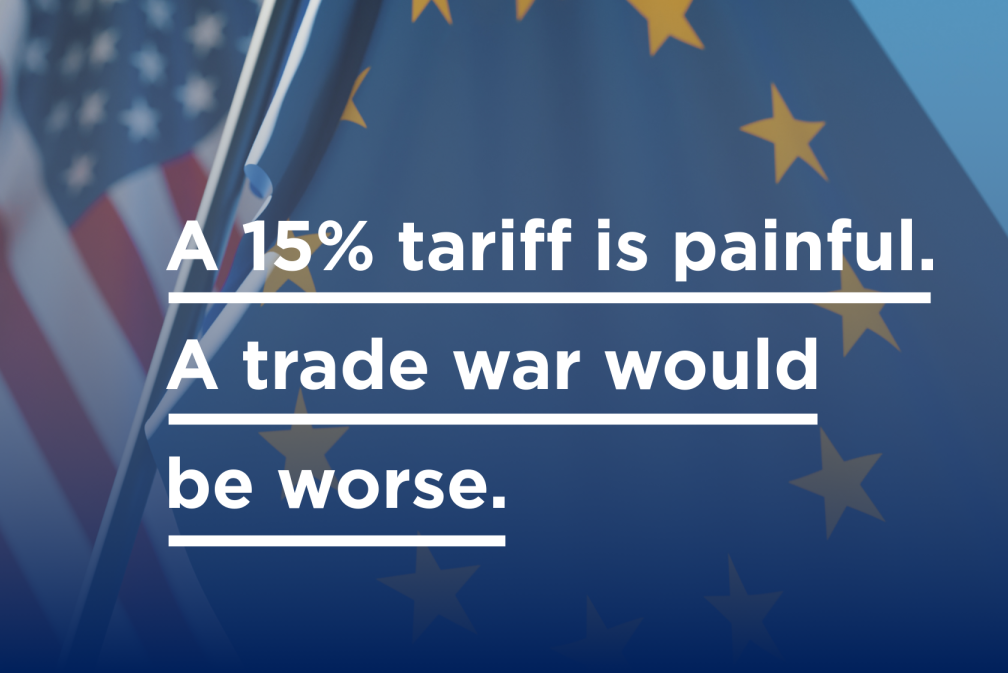What’s in the plan?
The Green Deal Industrial Plan seeks to accelerate efforts to address climate change and promote green technology. Although key details have yet to be released, the proposal is a step in the right direction. It focuses on issues with the potential to nurture a sustainable economy and maintain the competitiveness of Europe’s critical industries.
The plan also outlines a comprehensive approach to industrial policy, with a strong emphasis on an open trade agenda and the Single Market, the main driver of foreign direct investment into Europe. The proposal is based on four pillars, including a predictable and simplified regulatory environment, speeding up access to finance, enhancing skills, and open trade for resilient supply chains. In greater detail:
Regulatory environment: The EU is right to analyse the impact of Europe’s complex regulatory environment in attracting investment. As specific proposals emerge, including the forthcoming Net-Zero Industry Act, the Commission must prioritise simplicity, predictability and consistency with existing regulations. While the political debate has thus far focused on subsidies, addressing the overall business environment is critical to making the case for investing in Europe.
Faster access to financing: Currently, the process to access funding is lengthy and difficult for companies to navigate, deterring some from even applying. Any effort to simplify procedures and reduce administrative burdens is welcome. The new plan proposes amendments to the EU state aid framework that could have wide-ranging implications that must be assessed. Hand in hand with these changes, the completion of the Capital Markets Union can also play an important role in unleashing private investment into the green transition.
Skills: Investment in low-carbon technologies will lead to the creation of new jobs. Likewise, partnerships between the public and private sectors will be critical to reskilling and upskilling the workforce. Given that the Commission has declared 2023 to be the European Year of Skills, such partnerships would be not only advantageous but also timely.
Trade: As set out in the plan, the EU’s ambitious trade agenda will strengthen the competitiveness of the Single Market in the global economy by encouraging industry investment in Europe. A multilateral agenda built on rules-based trade is a key component of its success.
On each of these initiatives, further information and guidance will determine if the Green Deal Industrial Plan can attract the necessary investments. One important consideration is whether the approach includes all technologies that can help achieve the EU’s climate objectives. Ultimately, the proposal’s success rests on investors’ assessment of three fundamental questions: Is funding not only available but easily accessible? Is the regulatory environment conducive to business? And do they have the clarity they need to invest in Europe?
An affirmative agenda for EU-US cooperation
More broadly, the EU Green Deal Industrial Plan is representative of the level of ambition on both sides of the Atlantic in pushing forward the objectives of the green transition. Last year, the US passed the landmark Inflation Reduction Act to support investment in infrastructure and sustainable technology. It represents nearly $400 billion in federal funding, mostly through tax credits. While it raised some concerns in Europe over its implications for markets outside the US, it also highlights an historic opportunity for the EU and the US to collaborate on sustainability issues.
The EU and the US should not compete in a subsidy race against each other but instead, align and coordinate their strategic investments to strengthen the resilience of global supply chains. A number of platforms already exist to facilitate this cooperation, not the least of which is the Trade and Technology Council, which will convene for its fourth meeting later this year. Through this and similar initiatives, the transatlantic partners can amplify their efforts to enhance sustainability across all sectors, a goal at the heart of both the Inflation Reduction Act and the Green Deal Industrial Plan.
Along with the promised support for investments in a low-carbon economy, the Commission’s focus on not only maintaining but furthering the EU’s competitiveness is an encouraging development. In this critical moment, American companies stand ready to partner with the public sector to achieve its sustainability objectives. What remains to be seen is if the implementation of the EU plan follows through on its aims and attracts the investment Europe needs to bring the Green Deal’s ambitions to fruition.



